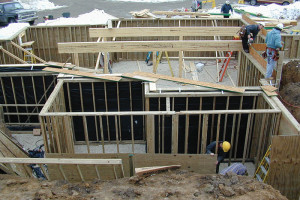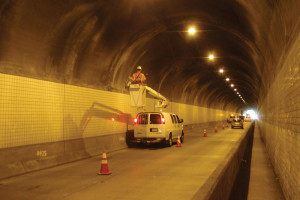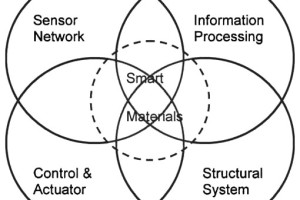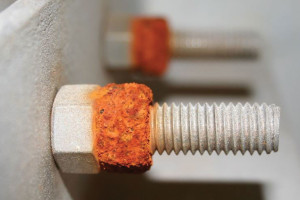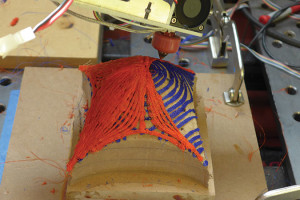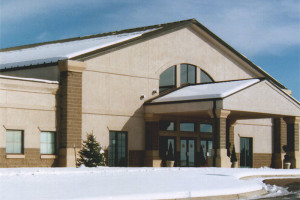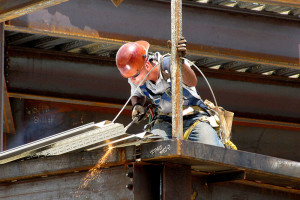The 2015 Permanent Wood Found-ation (PWF) Design Specification addresses structural design requirements of wood foundations for light-frame construction. The standard for designing wood foundations is most commonly used in residential structures in the upper Midwest. The 2015 PWF standard is adopted by reference in the 2015 International Building Code (IBC) and the 2015 International Residential Code (IRC). …
Review Category : InSights
Following the tragic ceiling collapse in the Interstate 90 Connector Tunnel in Boston, Massachusetts, on July 10, 2006, the National Transportation Safety Board’s Highway Accident Report, NTSB Number HAR-07/02, identified several safety issues including, “inadequate regulatory requirements for tunnel inspections.” On July 6, 2012, President Obama signed the Moving Ahead for Progress in the 21st Century Act (MAP-21), which required the Secretary to establish national standards for tunnel inspections. Thus, the impetus for a tunnel safety inspection program can be traced back nearly ten years, with the requirement to develop national tunnel inspection standards mandated nearly four years ago. …
The Key to Success
Are you being asked to participate in a fast-tracked project? Do you want to get the best results? There are success factors that have been proven on many projects, large and small, including some “mega” projects, across industries from healthcare to retail. …
Structural Engineering is an evolving field. Our profession continues to innovate with brilliant new technology, materials, and analysis methods, at an ever increasing pace. I can remember when I started as a junior structural engineer in 1983, the introduction of personal computers was just beginning to take place, along with the finite element method for structural analysis. This was a significant step forward from the previous generation of engineers who grew up on slide rules. After 33 years, I’m still learning. …
Fasteners are typically low cost items; however, their failures may result in catastrophic and costly consequences. A recent case of bolt failure that has received enormous media attention was associated with the San Francisco-Oakland Bay Bridge, the second busiest bridge in the nation. While investigations continue on the primary causes of bolt failures, corrosion was recognized as the foremost contributor. Corrosion is a naturally occurring phenomenon, the direct cost for which is a staggering $558 billion in the U.S. – approximately 3.1% of the U.S. GDP (2015). …
ACI has published three documents that will assist in selecting, designing, and specifying formwork systems for concrete structures. The first of these releases was a new document intended to provide a means of better communicating the desired formed surface finish and quality between the engineer/architect and the contractor. The most recent releases are revisions of documents that have been staples in the formwork community for years. …
Technologies for 3D printing, or more broadly additive manufacturing, have proliferated in recent years, and have captured the public’s imagination as a revolutionary way to democratize small-scale, customized manufacturing for the DIY community. In the design of buildings and bridges, 3D printing has proven to be a valuable technique for creating intricately detailed scale models in a fraction of the time required by traditional methods. …
Throughout a significant portion of the United States, the design snow load on roofs typically exceeds the roof design live load, so many structural engineers need to be familiar with snow load determination. The level of complexity in calculating the design snow loads for a building or other structure can vary from simple to complex, depending on the building location, the roof geometry, and the roof finish. The design snow load calculations for a flat roof with no parapets on a big-box store located in Iowa is relatively simple. …
An engineer’s stamp, or seal, is a symbol of professional pride and accomplishment. It signifies that the engineer has attained a level of education, competence, and experience so that he or she may be relied upon by private and public clients to prepare a set of plans and specifications that conform to the standard of care in the engineer’s area of practice. But does the mere act of stamping a set of plans create any additional liability concerns for the engineer? …
Steel has always been reliable as a building material – durable, strong, resilient and sustainable. Steel is also an innovative material, and there are new products and practices available to architects, engineers, building owners, contractors and others to streamline the design process and speed up the time of construction. Here are some examples. …

